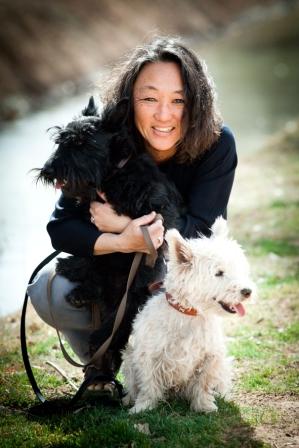Domestic or Wild?

One of the first things people notice about The Bosque Beast is that we cover all sorts of animals—tamed, working, and wild. Usually publications and broadcasts focus on either pets or wildlife, probably because they are separate marketing groups. Pet owners buy tons of stuff for their furry family members, whereas wildlife enthusiasts are hard to sell products to unless their main interest in wildlife is shooting it. And hunting clearly calls for a different set of consumer products than the Halloween pet parade.
Marketing interests aside, there does seem to be a split between the love of domestic and wild creatures, even for those of us who love both. Our pets are basically all about us. However much we may praise a dog’s unconditional love, the bottom line is that we love our pets because they are part of our lives.
Wild animals, no. They don’t need us or notice us, unless it’s to flee us. They do best living far from humans, except for the scavengers that are fine with arousing hatred in homeowners and
gardeners. People who are devoted to wild animals might never see or touch them (pp. 8-11), and their help will never be met with any tail-wagging, purring evidence of having done good.
In this sense, the love of wildlife is more selfless, because it acknowledges that humans are just a small part of the web of life, not the center of the animal world. And because wild animals can only be understood within their natural environments, caring for them implies a care and respect for all creation—the kind of care that is spiritual, ultimately, because it places something above human interest.
Yet it is only with domestic animals that we learn the kind of love that transforms, and makes us more evolved as human beings. Pets and livestock depend on us, like children, so they bring out our humanity and connect us to a natural world where we otherwise stick out as two-legged intruders. According to Jared Diamond’s Guns, Germs and Steel, it is only because humans were able to domesticate certain plant and animal species that we could devote time to science, philosophy, the arts. Domestication represents one glorious chapter in the history of the planet where humans and animals worked together to achieve what neither could do alone.
Today, our domestic animals serve mainly to meet our emotional needs, and to connect us to a natural world that is rapidly slipping away. For many people, a horse, dog, or cat is the last bit of connection to life beyond the obsessively human, with its multiplying products and ideas. Our domestic animals serve as constant reminders of how very little wildness we have left.
I feel this sometimes while walking my dogs, when the sudden appearance of a coyote or hawk will stop us all in our tracks. For one long moment, the dogs and I seem to share in the shock of our silly civilized ritual, a daily walk to nowhere. But only for a moment. In the next, the terrier instinct takes over, and they know to bark and pull and try to chase—leaving me with just a tug of sadness for that last bit of wildness we are so fine with leaving behind.
